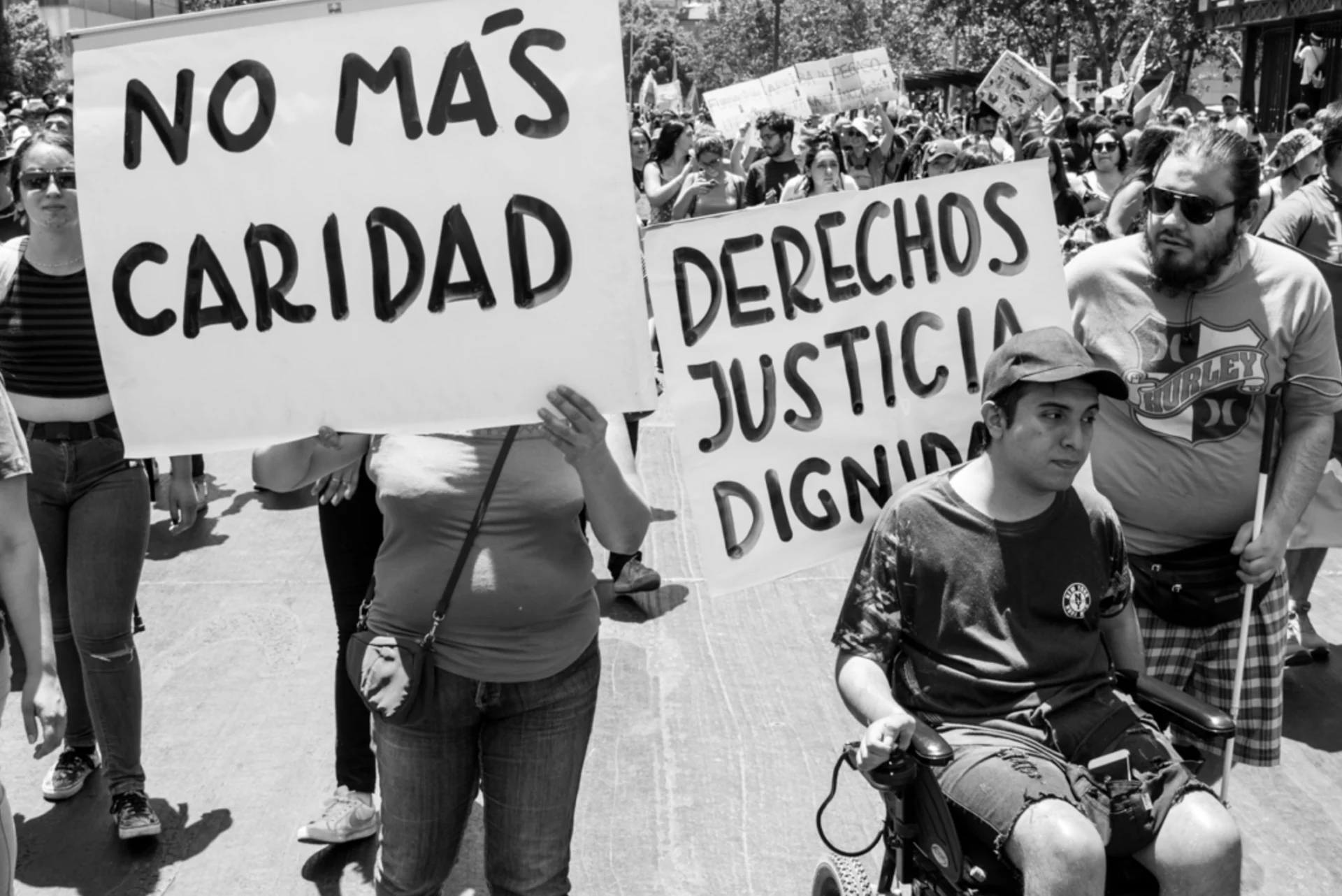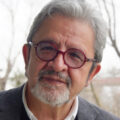Oxfam’s recent report on the end of the era of inequality is a genuine and practical contribution to the search for new horizons of a dignified life for people and their communities. Certainly, this report, along with the one presented worldwide at the Davos Conference and several national case studies, such as the one produced a couple of years ago in Bolivia, shows an inseparable chain between the national and local and the regional and global levels. Only by combining this chain is possible to understand the specific meaning of power and change that we experience every day, in the midst of intense techno-economic and scientific transformations and communication networks that operate on a global scale through the mercantile digitalization of politics and daily in human minds.
This is happening in the midst of a global multidimensional crisis with productive, social, ecological, political-institutional and multicultural elements intertwined where financial capital and criminal economies play a central role fundamentally through a fetishization of commodities, damaging ethics and human security. Who manufactures weapons? Who produces drugs and why? Who manages the technological and communicational industries and financial systems? And who gets rich in a miserable world?
One particular result, as the OXFAM study analyzes, is the inhuman increase in inequality and poverty. Inequality and poverty are inseparable. What does it mean that the two richest Latin Americans have increased their fortunes by 70% since the beginning of the pandemic and that their wealth is similar to that of the poorest half of the region? What did the neoliberal and neo-developmentalist options do in this regard? Why was the state, despite some successful moments of implementation of distributive policies, unable to sustain the reduction of poverty, let alone inequality?
The report highlights the doubt generated in society by the capability of the state, whether neoliberal or neo-developmentalist in orientation, regarding its interest or capability to reduce inequalities. In fact, neither the corporate patrimonial domination nor the neoliberal domination promoted by the “Washington Consensus” were able to fulfill their own objectives. They failed.
On the other hand, the study not only analyzes the distributive system, but also studies the tax systems and their logic of power in recent years, proposing a series of tax measures for the richest in order to reduce inequalities and poverty. It points to the state as the only actor capable of promoting new and effective measures by placing people and their communities at the center of the system.
The report also recommends five tax alternatives for the richest and even suggests a new fiscal pact to seriously address the problems of inequality. This is a novel contribution, as it proposes concrete and practical policies that, unfortunately, neither the parties nor the international development actors have suggested. Consequently, the report is an important reference for collective and institutional action that needs to be communicated. The diagnosis is as important as the proposal, but even more important is a communicative policy that allows for dialogue between the various actors and for their discussion to become a public good.
It is worth clarifying that as a product and part of the so-called multidimensional global crisis that began in 2007, the states, to a large extent, collapsed and in these years new horizons of renovating change are emerging. Authoritarian and elitist states, associated with an authoritarian nationalist market religion and socio-cultural forces, especially among the younger generations, more pragmatic, ecological, anti-patriarchal and ethical, possibly already mark the time of a new emerging historical temporality.
The question is to understand what reproduces, what changes. And in the middle lies the logic of socio-cultural conflict, which unfortunately is not addressed in the study. In the region, conflict and demands for better social reproduction, better institutions and cultural achievements in relation to otherness are at the center of public life in the region. The big question is whether these demands and identities can be transformed into actors of change in the information societies and techno-communication economies that are leading to an increasing automation of life.
In this area, there are several issues that the study raises as spaces for academic and political discussion. First, the historical and global framework and the cultural role played by the elites. In Latin America and the Caribbean, the origin of inequality is related to various phenomena such as the social stratification of colonial origin that continues to organize the behavior of the elites. In this context, a “dialectic of denial of the other” develops, of the different, where they are identified as indigenous, blacks, mestizos, women, etc. and immediately diminish them to justify their power.
The elites in the region practically do not comply with the law and over the years have not shown a “demonstration effect” of ethical and institutional behavior. Rather, what has been imposed over the years, with incredible mechanisms and modifications, are systems of intermediation and clientelism, bureaucratic rings, and a sort of idealization of autonomous leaders that never or seldom existed. Despite the important efforts made over time, except for cases such as Costa Rica and Uruguay, the articulation between institutions and inclusive patterns of development have been very limited.
Secondly, in global terms, national powers have become re-intertwined with global powers, generating new systems of “extractivism-information” at the productive, financial and commercial levels, conditioning and limiting ecologized human development. Individualism and consumerism already affect practically all societies, which are becoming increasingly urban.
The global state and corporate powers of the Western North, China, Japan and Australia are once again redefining the region as extractive and consumerist. Of course, at global, national and local levels there are also cultural forces and political actors seeking social transformations associated with sustainable economies. Socio-technological and ecological innovation is the main challenge. However, at the global level, ecological thinking is still weak in the face of the powers of destruction of life and the environment.
The region is among the main producers of raw materials, but at the same time it is among those that suffer most from the consequences of climate change. Similar logics apply to gender equity and the construction of a new global ethic based on the dignity of human rights and nature.
Thirdly, it seems necessary to redefine the type of state to address the changes proposed by the report. A state that can innovate, sail against the wind by articulating production and distribution, and whose strength lies in a community of citizens. In short, a state of the public, as redefined by Sen and Ul Haq in the 1993 HDI, where a market economy is combined with a public one. “Both the state and the market should be guided by the public. The two should work in tandem and the public should have sufficient powers to control both effectively. It could do so through participation in government or as producers and consumers, or often through people’s organizations or non-governmental organizations.”
Fourth, it is essential to strengthen the subjects of development and their capacity for agency to transform goals into results and, above all, to articulate procedures with results. Carrying forward the three measures suggested by the report: actions to reduce intersectoral inequalities by putting people and communities at the center, promoting climate justice to contribute to the sustainability of life, and promoting gender and care responsibility policies, require autonomous actors that support the action of a public state.
In this area, the proposed transformations need to articulate a relevant institutional order with a logic of collective action. In this respect, it seems essential that the actors of a new development be articulated, not only at the local level, but also at the global level. There are interesting territorial experiences that should be known and discussed, both at the rural and urban levels, within the framework of a dynamic of functional transformation and increasingly specialized changes that bring new demands.
Consumerist secularization is flooding people’s minds. But the information networks also constitute the spaces for action and redefinition of the new actors of an emancipatory ethical change. It is also important to renew empirical thinking that strengthens the capacity of the new actors of development.
Finally, fifthly, it is worth rethinking the question of inequality and poverty as a process of social and functional differentiation in increasingly complex and globalized societies. This implies a juxtaposition of exclusions and social and techno-scientific differences associated with new and growing forms of concentration of power, particularly financial and scientific and technological power.
It is necessary to understand inequality in a context of changing reproduction of social power relations. Poverty, as Sen has analyzed, refers not only to lack of income, but also to the relational perspective of power. In reality, what genuinely exists are impoverished lives. This is why citizen participation is fundamental to sharing social life. People and their communities need to be able to freely choose the kind of life they want. In this logic, work is not only employment, it is also human recognition where people need to be recognized as full citizens. Today, work and information education already underpin human dignity.
Inequality in the region has varied and has become more complex over the years in various ways. Between countries, within each country and between territories. For example, according to the HDI in 1999, the distance between the richest and poorest countries has gone from 1 to 3 in 1820 to 1 to 72 in 1992.
Inequality, as mentioned above, is linked above all to ethnicity. The poorest populations in the region are Afro-descendants and indigenous communities. Perceptions of inequality and the need for change are persistent and in the majority among the people of the region. According to the Latinobarometro 2019, 79% of Latin Americans think that “a few powerful groups govern for their own benefit” and that they live in an unjust society that should change.
Likewise, societies in countries with greater social gaps tend to reproduce their inequalities and their perception of inequalities is lower than in countries with smaller social gaps. Of course, when experiencing situations of crisis and risk, perceptions increase even more. Moreover, in these times of global multidimensional crisis, both those included in formal productive systems and those living in informal situations perceive great uncertainty. This is the only certainty, as is the title of a book by the Guatemalan poet Hugo Alfaro. We live in polycentric societies in the midst of an uncertain and changing geopolitics of power.
Finally, at the heart of all the vicissitudes is the meaning of change, of progress and of the words themselves. For example, in Quechua, the word poor is “wakcha” and means one who has no friends, no family, no social ties. “Poor” is the one who is alone, orphan. Imagine an index of “loneliness” among the richest people in the world. Surely for the Quechua culture many will be among the poorest.
*Translated by Janaína Ruviaro da Silva from the original in Spanish.












